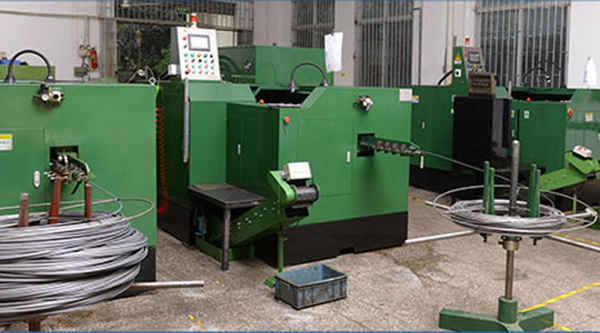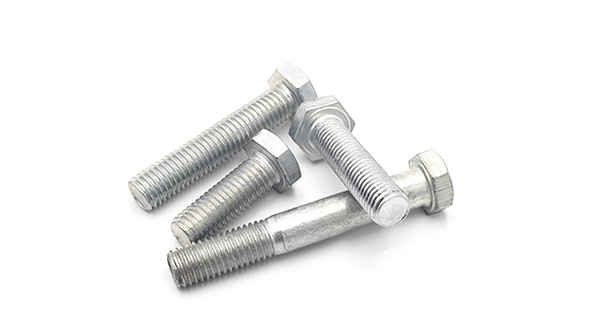What is the tolerance range of precision screws?
What is the tolerance range of precision screws?
Service Hotline
+86760-8787 8587We have more than ten years of production experience in the screw industry. The main products are: trapezoidal nuts, flange bolts, ball head positioning pins, finger screws, large wholesale nuts, precision rivets, spaced internal teeth, flat washers with large sides and small sides, half Solid rivets, copper hexagon nuts, snap-fixed riding clips, brass screws and screws, ISO7380 hexagon socket head pan head screws, die bolts, semi-circle head pan head screws and other fasteners, due to different product materials and specifications, the price is also different, please contact us if necessary.


Fasteners are also divided into different types according to different uses, and new types of fasteners are developed according to the needs of special environments to meet the needs of all walks of life. The gasket combination bolt is a common fastening bolt. The combination gasket protects the surface of the connected parts from scratches, disperses the pressure on the connected parts, and has a sealing and anti-loosening effect. It is widely used. With the continuous improvement of requirements, the new zinc-aluminum coating surface treatment has gradually become the mainstream surface treatment process because it meets the environmental protection requirements, the surface is beautiful, and the corrosion resistance strength is higher than that of the zinc-nickel surface treatment.

Anti-corrosion technology Stainless steel screws are made of metal, and there are four main methods for metal anti-corrosion, namely the properties of the material itself, the environment of use, the interface between materials and the environment, and the improvement of the metal structure design. If a complete anti-corrosion alloy is used to make stainless steel Screws, unless there is a special need, are not cost-effective in terms of economics, and it is also impractical to completely isolate the appearance of the screw from environmental elements that can cause corrosion. Improving the metal structure design can improve the influence of special circumstances under certain conditions, but the design of most stainless steel screws cannot be fully corrected, and its maintenance effect is not permanent, so this method cannot basically solve the problem, as long as it is on the surface. Top anti-corrosion, that is, surface anti-corrosion treatment is the most widely used method. The anti-corrosion treatment on the surface of stainless steel screws refers to the use of various methods to apply a protective layer on the metal surface. The purpose of avoiding or mitigating corrosion. The protection layer should be able to meet the following requirements: 1. Corrosion resistance, wear resistance, high hardness, 2. The structure is tight, intact, and the pores are small. 3. It has strong separation and good adhesion with the base metal. 4. It is evenly distributed and has a certain thickness. The maintenance layer is usually divided into two types: metal coating and non-metallic coating. Metal coating refers to the use of metal or alloy with strong corrosion resistance to form a maintenance layer on the surface of metal that is easy to corrode. This coating is also called plating. There are quite a few methods and varieties to produce metal coatings, the most common of which is electroplating, followed by molten metal immersion plating (hot dipping) and chemical surface treatment. Non-metallic coating refers to the use of organic polymer materials such as paint and inorganic materials such as ceramics to form a protective layer on the surface of metal equipment or parts. The protective layer can completely isolate the base metal from the environmental medium and prevent the base metal from corrosion due to contact. Corrosion is formed in the medium of stainless steel standard parts.


The common riveting techniques of non-blind rivets are divided into cold riveting and hot riveting. Cold riveting is a riveting method that uses a rivet rod to partially pressurize the rivet, and continuously swings around the center or the rivet is forced to expand until the rivet is formed. The common cold riveting methods are the pendulum riveting method and the radial riveting method. The pendulum rolling riveting method is easy to understand, and the rivet head only swings and rolls in the circumferential direction.

The quick-install and quick-release nut uses the threaded block to move radially and axially along the inclined surface at the same time to achieve the cohesion and separation of the threaded block. However, the nut has a complex structure and is difficult to manufacture, and the internal and external threads may not be properly locked during use. Occurs, bearing capacity and reliability are poor.

The above content is uploaded by Yueluo or the Internet. If there is any copyright issue, please contact [email protected].

What is the tolerance range of precision screws?

How to choose the right stainless steel screw manufacturer?

Why is there an R angle under the head of the hexagon head s...

We have more than ten years of production experience in the ...

We have more than ten years of production experience in the ...

We have more than ten years of experience in screw industry ...

We have more than ten years of production experience in the ...